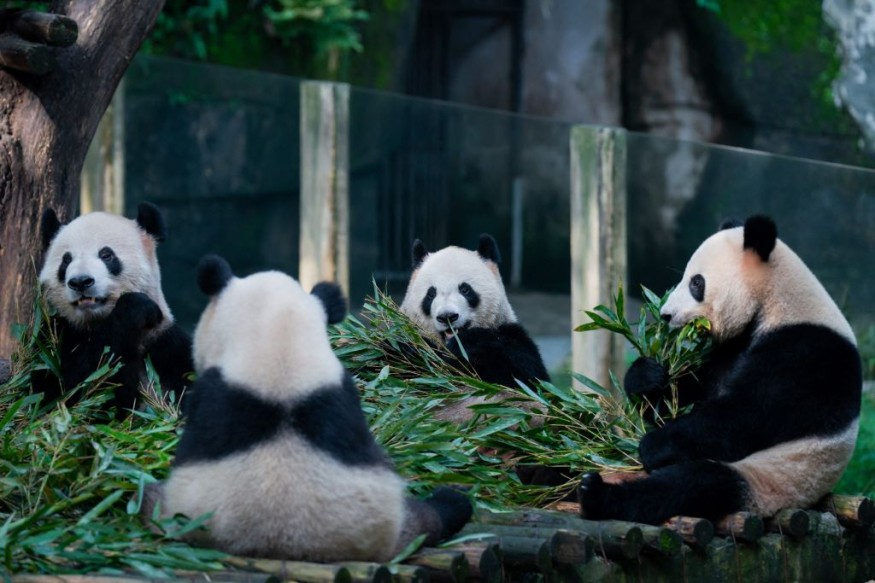
Two giant pandas and their cub left a US zoo to return to China, the National Zoo in Washington, D.C.
Mei Xiang, Tian Tian and Xiao Qi Ji have landed in Chengdu! After a safe flight, they are on the way to their new home. Our team will stay for a few days as the pandas get settled. Thank you to @FedEx for transporting our Very Important Pandas in style! 🐼 🐼 🐼 🛬 #PandaStory pic.twitter.com/ATOzp1U8Ev
— National Zoo (@NationalZoo) November 9, 2023
Since 1972, when zoos in the United States signed an arrangement with the China Wildlife and Conservation Association, giant pandas have been a popular attraction in the country.
Journey Of The Panda
Mei Xiang, Tian Tian, and their three-year-old cub, Xiao Qi Ji, arrived in Chengdu, China, on a FedEx Express charter flight from the US.
On their journey to China, the pandas were accompanied by animal care experts from the Smithsonian's National Zoo and Conservation Biology Institute and traveled in custom-built transport enclosures provided by FedEx.
Aside from supplies like bamboo and water and their favorite delicacies like sugar cane, apples, and pears, the pandas were the only cargo on the trans-Pacific journey from Washington's Dulles International Airport to China's Chengdu Shuangliu International Airport.
The pandas spent time familiarizing themselves with their cages prior to their departure to ensure a safe and enjoyable voyage.
Mei Xiang, Tian Tian, and Xiao Qi Ji were greeted on the airstrip by their new keepers before being transported to the Shenshuping facility in Wolong, where they would remain quarantined for around 30 days.
"They are at the age when they should be in China," said Melissa Songer, a conservation biologist at the Smithsonian National zoo. "I don't want to have a panda pass away outside of China."
As part of the deal, the parent pandas were brought to the US zoo in 2000.
The pair were supposed to stay for only ten years for a research and breeding program, but the deal with China was repeatedly extended.
The couple gave birth to a boy cub named Xiao Qi Ji on August 21, 2020.
The zoo announced the same year that it had signed another three-year agreement to keep all three pandas until the end of 2023.
Panda Diplomacy
The National Zoo got its first pandas from China in 1972, Hsing-Hsing and Ling-Ling, in an effort to save the species through breeding. Since then, the zoo has had panda couples.
Mei Xiang gave birth to seven cubs in the zoo. Three of her cubs perished before reaching adulthood, and three have been sent to China; as part of the deal, they must be returned by the age of four.
Xiao Qi Ji will stay at the zoo with his parents until they all return to China.
With the return of these three pandas, only four giant pandas will remain in the United States, all of them at the Atlanta Zoo, which is home to Lun Lun and Yang Yang and their children, Ya Lun and Xi Lun.
According to China's deal with the Atlanta Zoo, the younger cubs will be returned at the end of 2024, and their parents are likely to return as well.
The loan deal, which was established in the mid-1990s, is set to expire in 2024, and the zoo says there are no plans to extend it.
The only other zoos in the United States that held giant pandas were the Memphis Zoo and the San Diego Zoo.
In 1987, San Diego received its first two pandas for a 100-day tour. In 1996, the zoo inked a 12-year arrangement and obtained two pandas named Bai Yun and Shi Shi.
The deal was repeatedly extended, and six pandas were born at the zoo. By the end of the arrangement, which ended in 2019, they had all been returned to China.
Related Article : China Running Out of Panda Caretakers Despite Hundreds of Applicants
© 2025 NatureWorldNews.com All rights reserved. Do not reproduce without permission.





